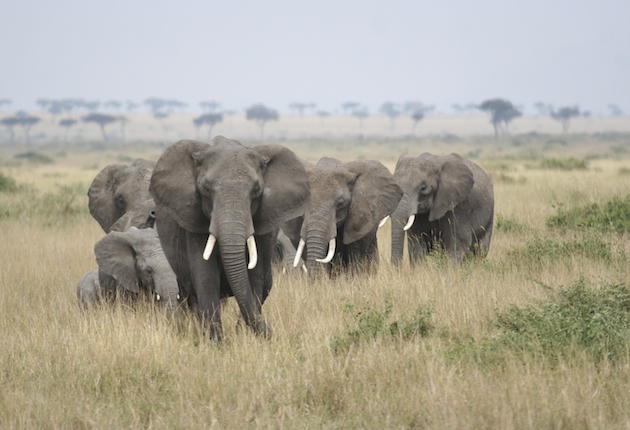George Dante is an artist. He doesn’t paint people; he doesn’t sculpt statues. His work brings dead things back to life—at least to the observer. Dante is one of the world’s most renowned taxidermists, and he might be the reason future elephant hunters are able to go on safari.
Investigative journalist Bryan Christy was working on a much larger story for National Geographic when he contacted Dante with an unusual proposal. As part of his research into how poached elephant ivory fuels terrorism across the globe, Christy hired Dante to build a fake tusk, hollow in the center, which would be so realistic it could pass under the noses of poachers and buyers without being detected. To do it, he contacted the man the American Museum of Natural History relies on for its taxidermy specimens.
Inside the hollow “tusk” would be a specially built GPS device that would allow NatGeo to follow the ivory’s route through the jungles, market places, and backrooms of the Black Market. Christy had tusks on loan from the US Fish and Wildlife Service, which Dante used as the basis for his design. He built the tusk to look, feel, and even sound like ivory. Real tusks give off a distinct ping when hit, meaning Dante had to build in another level of credibility for the fakes.
Dante painted stains, lines, and other unique features into the piece to give it as much personality as a living elephant’s tooth would have from years of wear. Growth rings on the inside of the tusk were also simulated where the tusk was supposedly cut from the skull. The more details the better—Christy’s safety was tied up with the tusk, as the two traveled together for the story.
The GPS tracker was specially built for the project and was housed near the tip of the tusk. This allowed for the least amount of material between the device and the exterior of the ivory, providing a more reliable signal to satellites tracking its wherabouts on the planet.
If successful, this tusk will unmask the poaching industry and help locate the carvers, sellers, and poachers who make the process viable. Christy plans to have Dante make more of the tusks depending on the results of the prototype.
To read the full story, click here.


Ivory-seeking poachers have killed 100,000 African elephants in just three years. An increasing number of elephants have no tusks, according to a survey.
Research at the Queen Elizabeth National Park, Uganda, showed that 15% of female elephants and 9% of males in the park were born without tusks.
In 1930 the figure for both male and female elephants was only 1%. being tuskless is better than being dead. at least in high poacher areas, why cant real tusks be cut off and replaced with metal Prosthetic tusks . http://www.cnet.com/news/elephant-gets-steel-fortified-supertusks/